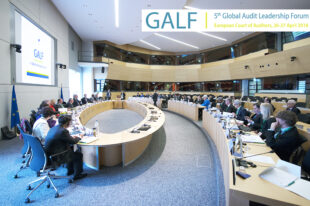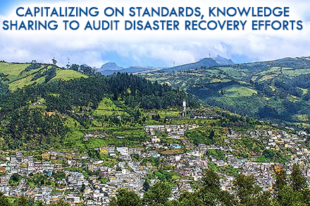Office of the Auditor General of Canada Studies Social Media Impact on Audit Report Reach

by Vincent Frigon, Office of the Auditor General of Canada
Good stakeholder communication is important to the success of any Supreme Audit Institution (SAI), and Social Media (SM) is a communication tool that can significantly improve engagement and increase audit report impact by reaching relevant audiences, including elected officials, journalists and interest groups.
How good are we at reaching these key audiences? What are some effective strategies? What resources are needed? Answers to these questions are often elusive due to challenges in isolating the impact of SM campaigns from that of other communication mechanisms, such as news releases and press conferences.
The Office of the Auditor General of Canada (OAG) tables performance audit reports in Canadian Parliament on pre-determined days and generally includes the fall and spring reports of both the Auditor General and Commissioner of the Environment and Sustainable Development.
The OAG recently analyzed results from SM campaigns for audit report tablings spanning an estimated two and a half years and compared the results to press coverage indicators. Although more research is necessary, pilot data indicate SM campaigns make a major contribution to audit report impact primarily by raising stakeholder awareness.
While each SAI is different (and what works for one may not work for another), this research can, at a minimum, energize dialogue on employing SM to increase audit impact.
Methodology
OAG performance audit report tablings to the Canadian Parliament typically include a media lock-up, news release and press conference.
The OAG monitors press coverage (from a traditional media perspective) as a way to measure reach. Similarly, the OAG monitors SM messages posted on tabling days to assess reach and engagement, including the number of clicked links to view publicly available reports.
In the period analyzed, May 2018-October 2020, up to four employees were working regularly on Twitter-specific social media campaigns that resulted in 4-15 tweets (in both English and French) per tabling.
The OAG examined the number of clicks on Twitter and the number of articles published in traditional media within a 24-hour period after tabling the reports.
Indicators for measuring media impact were defined:
- Poor Impact: fewer than 100 clicks or fewer than 50 articles;
- Good Impact: 100-199 clicks or 51-149 articles; and
- Strong Impact: 200+ clicks or 150+ articles.
Data were obtained through Hootsuite for social media and Newsdesk (a government-based database of news articles)for press coverage.
The Findings
Indicators are far from perfect, as press coverage depends largely on competing news stories. This variable makes it impossible to determine, with complete certainty, major factors that can be enhanced—is it the audit report topic, better communication with traditional media, more effective social media messaging, or a lack of competing news?

As Table 1 demonstrates, when press coverage was poor, the number of clicks remained at a “good” level of impact. SM trends were comparable. When traditional media coverage was “good,” SM impact was as strong, if not stronger. This implies SM campaigns may have a substantial impact on audit report reach.
Contrary to traditional media coverage (where results are quite unpredictable), SM results appear to be predictable and constant. This may be explained by traditional media coverage being affected by competing news on tabling days. With social media, users decide what to view based on individual interests, which provides an opportunity for SM managers, who can prepare campaigns based on (more predictable) stakeholder interests.
Pilot data suggest posting messages on a consistent basis represents a better long-term strategy (rather than posting solely around tabling periods), as users tend to prefer regular engagements and authentic interactions—where the possibility of commenting and feedback is high.
This, of course, represents a real challenge for many SAIs, which are inclined to communicate in a more unidirectional mode. Bidirectional communications, combined with regular SM posting, also requires dedicated resources, a capacity to adapt to new situations, and an ability to provide quick responses.
More research and experimentation is needed to determine the most effective resource configurations, strategies and incentives.
While dissimilarities in media and parliamentary systems, connectivity, and legislative mandates may lead to differing conclusions from one organization to another, sharing case studies and best practices can help SAIs amplify reach and increase audit report impact.





